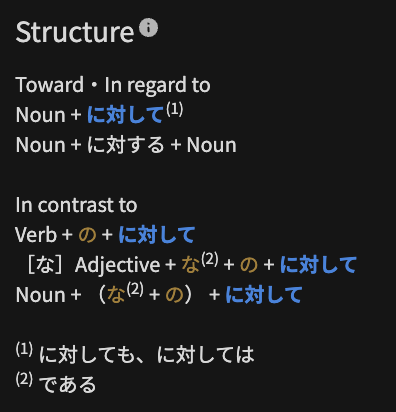well, in the first example, you can replace it with one of the two things separated by a comma, right? My point isn’t that I have specific questions about these things, I can look those up in the reference.
I’d rather see something like [な] Adjective + な, に対しても or に対しては or something. I guess my main complaint is that it just seems like a very dense set of information that even being half way through N3 on bunpro still feels really hard to parse. Even just with how close each form is, how the spacing is offset for one of them, having to jump between footnotes, that kind of thing.
I don’t have a solution, and I’m not saying these structure guides are bad, just that I surprisingly still have trouble with them even after lots of use. Maybe even just some formatting would make it easier to parse.


 .
. Bunpro is still the best grammar learning resource for Japanese by a country mile. Just thought the feedback might help
Bunpro is still the best grammar learning resource for Japanese by a country mile. Just thought the feedback might help 